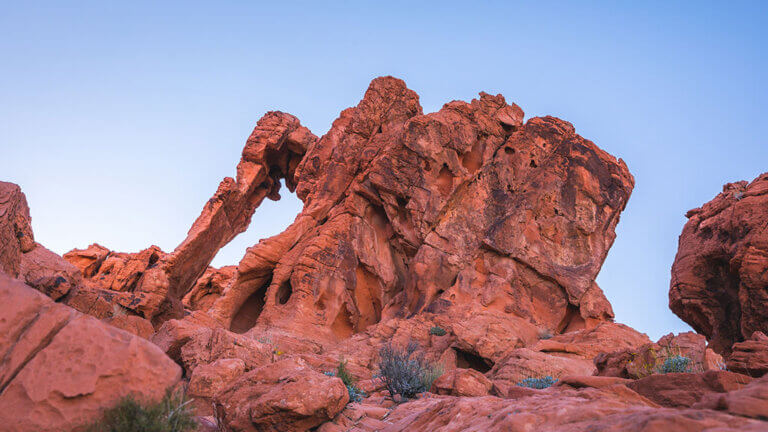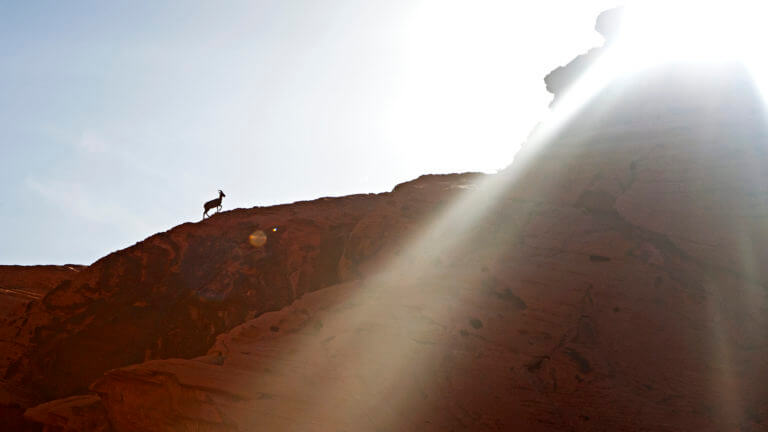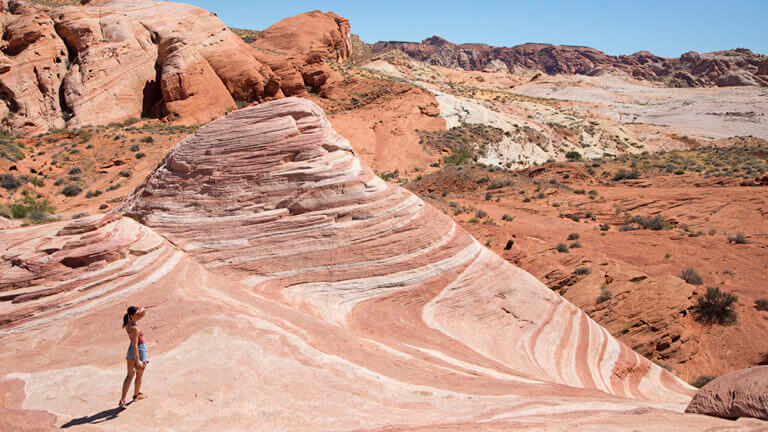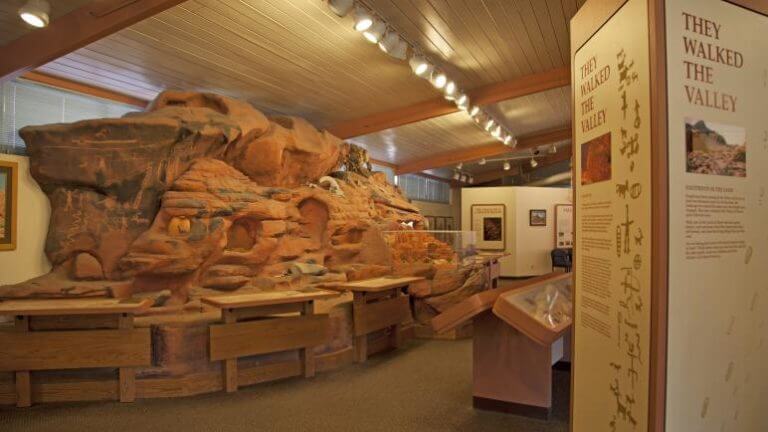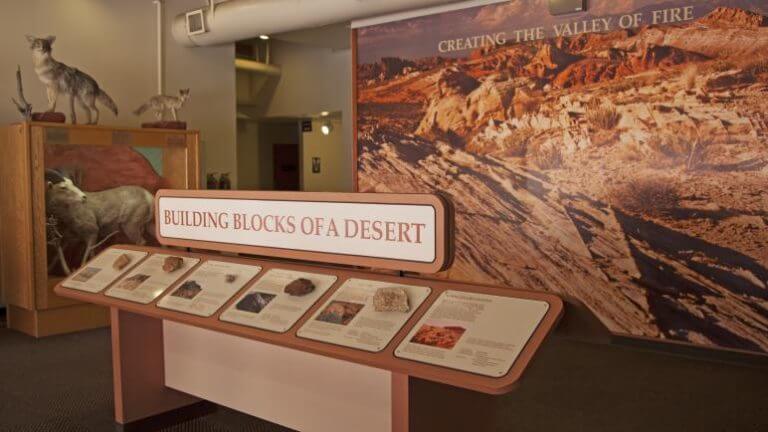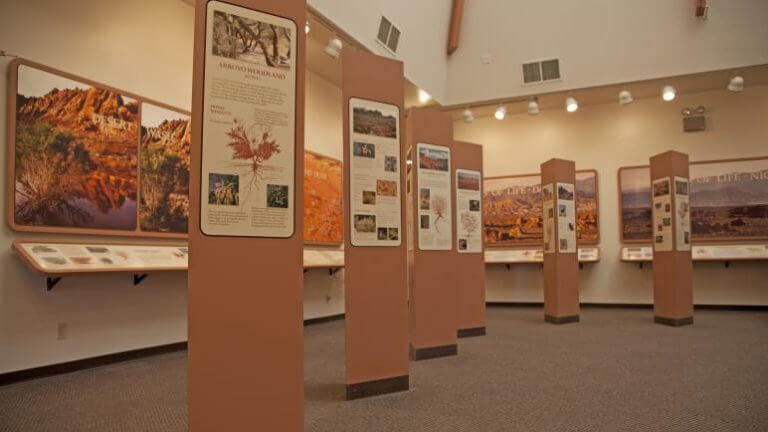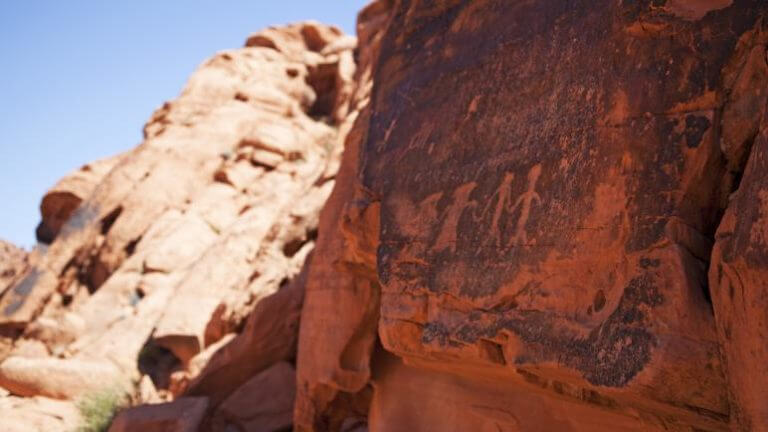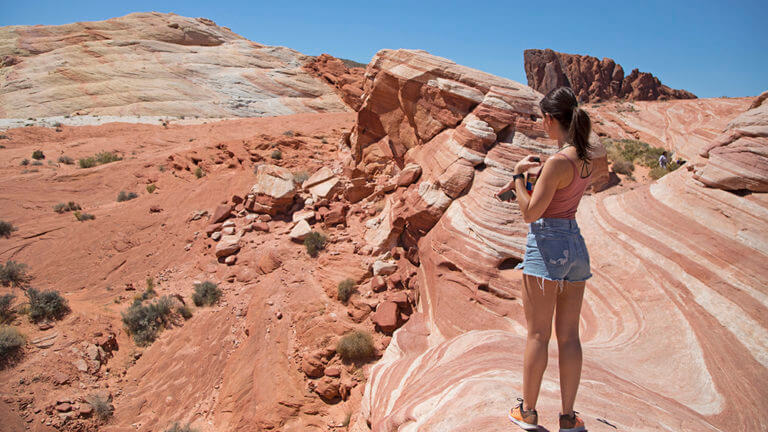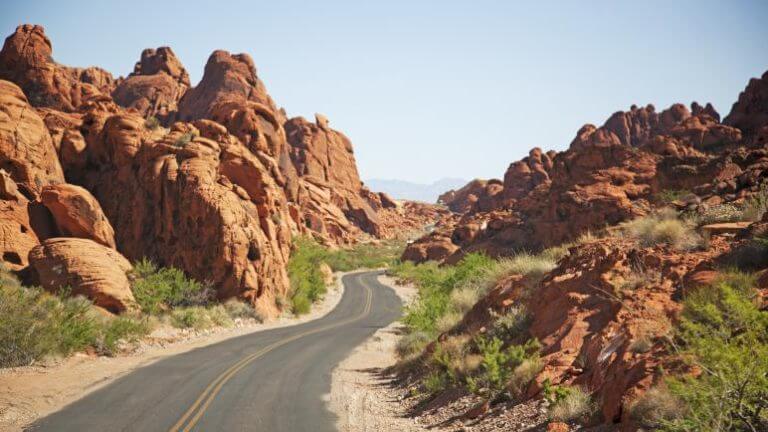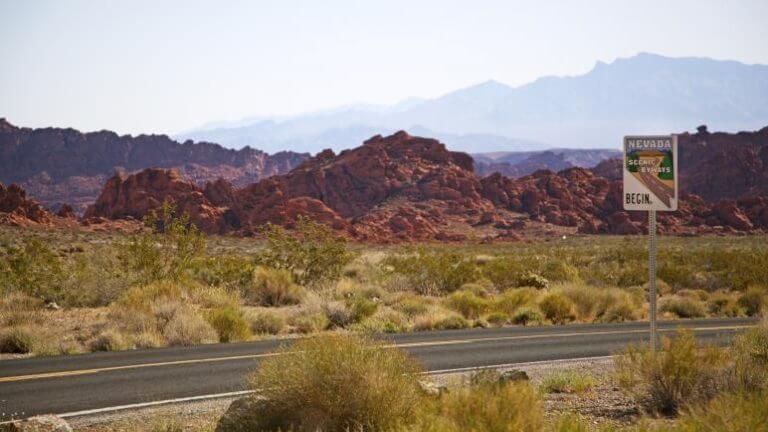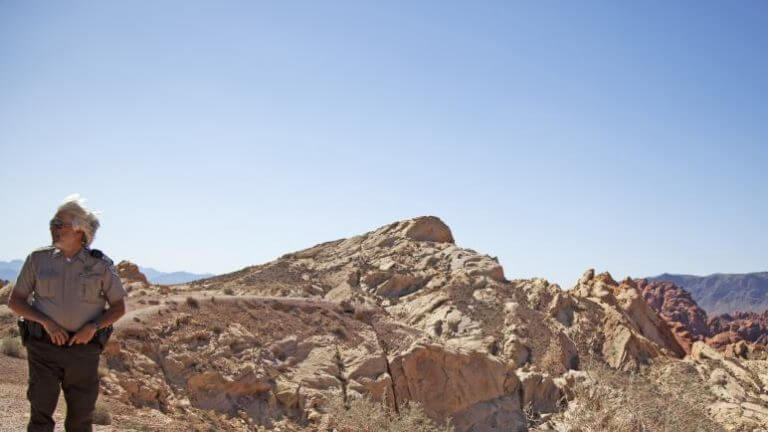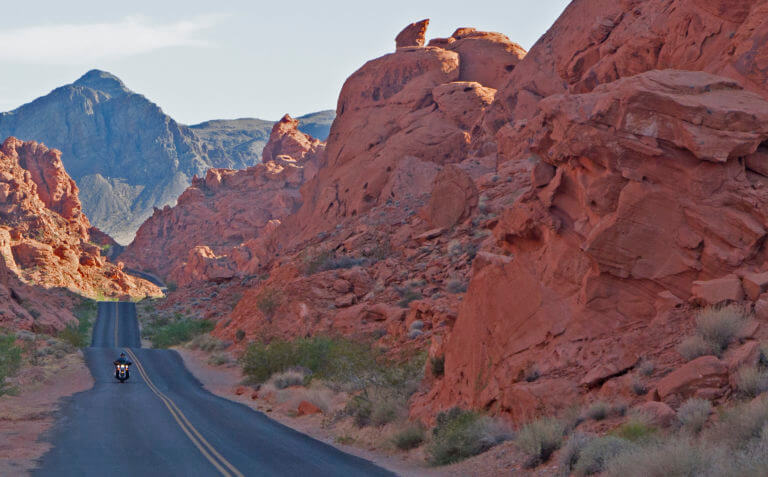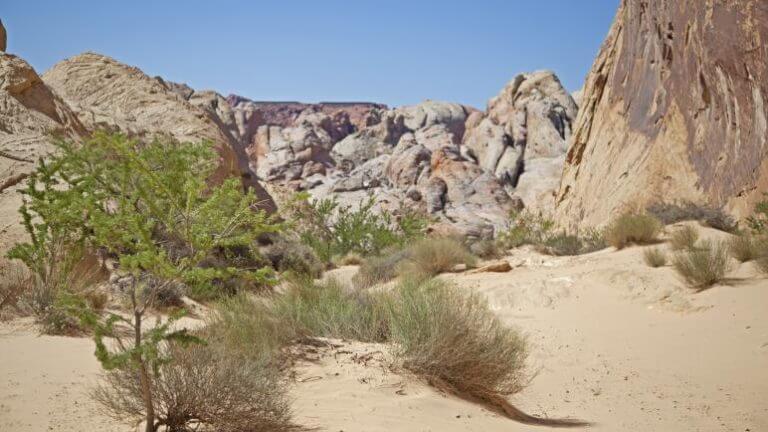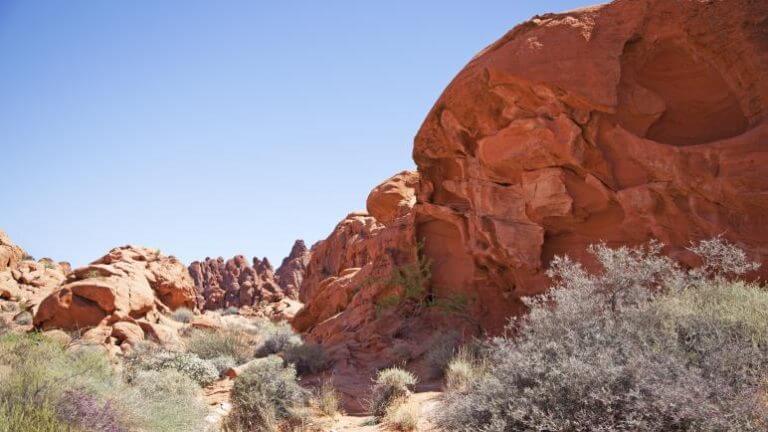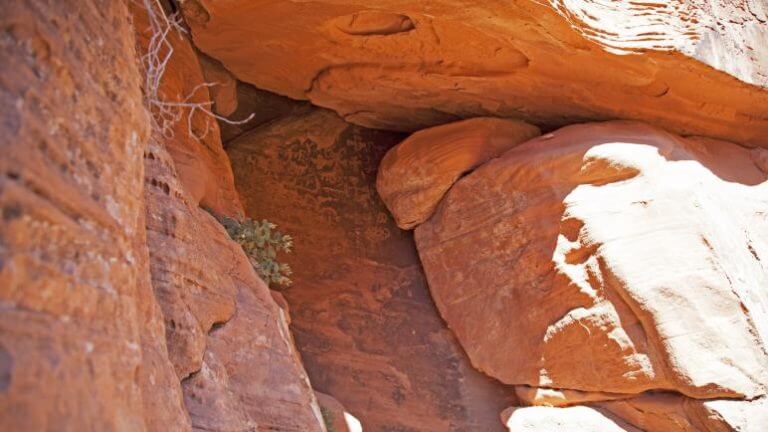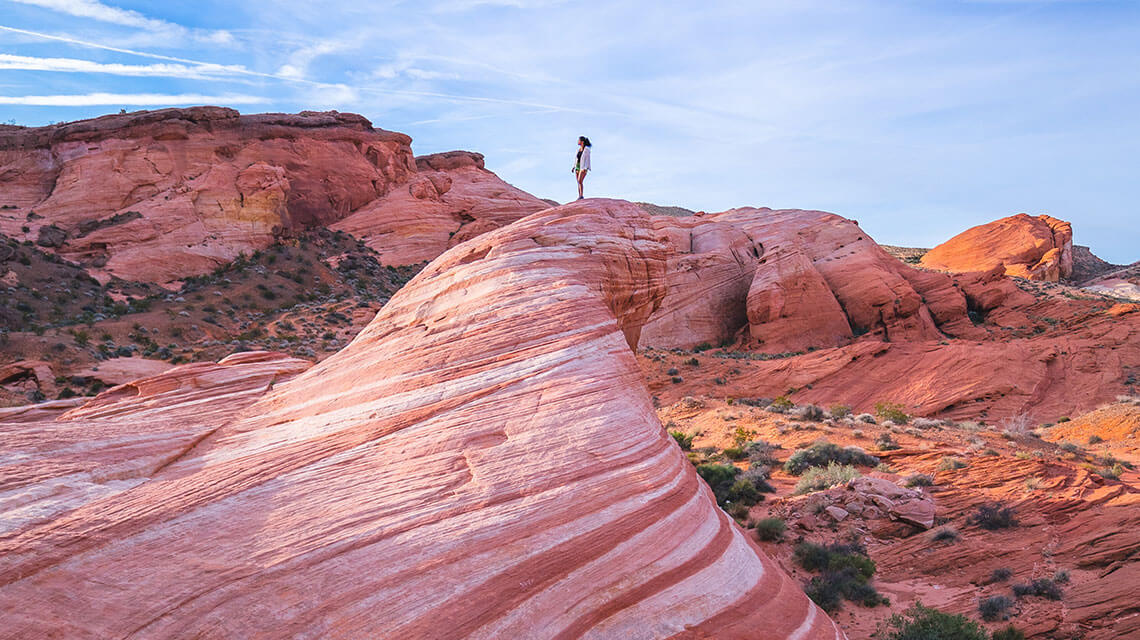
Valley of Fire State Park
The Best of Valley of Fire – Sunrise to Sunset
Of all the state and national parks in Nevada, Valley of Fire remains a favorite for visitors and locals alike, thanks to the fiery sandstone formations swirling through the valley, ancient petroglyphs carved into its stones, stunning red sandstone rock formations, ancient petroglyphs, and quick access from Las Vegas.
Valley of Fire State Park History
Ancient petroglyphs were carved into red sandstone rock formations at Valley of Fire State Park—a remnant from the Ancestral Puebloans living in and around the modern-day Moapa Valley area 2,500 years ago. By the mid-1860s, Mormon missionaries settled St. Thomas, which eventually wound up flooded by the waters of Lake Mead during construction of the Hoover Dam in the early 1930s.
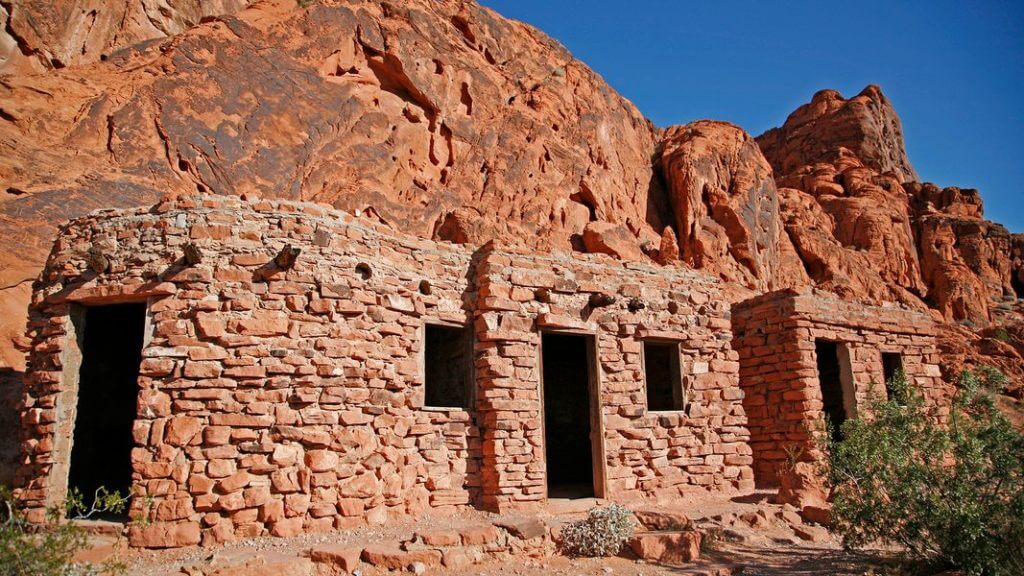
In 1931, a transfer of 8,760 acres of federal land to the state of Nevada began the creation of Valley of Fire State Park. The Civilian Conservation Corps (CCC) built the park from 1933 through the early 1940s, making campgrounds, stone cabins, trails, and roads. The park opened in 1934 and was officially designated Valley of Fire State Park in 1935, becoming Nevada’s first state park.
How Valley of Fire Got Its Name
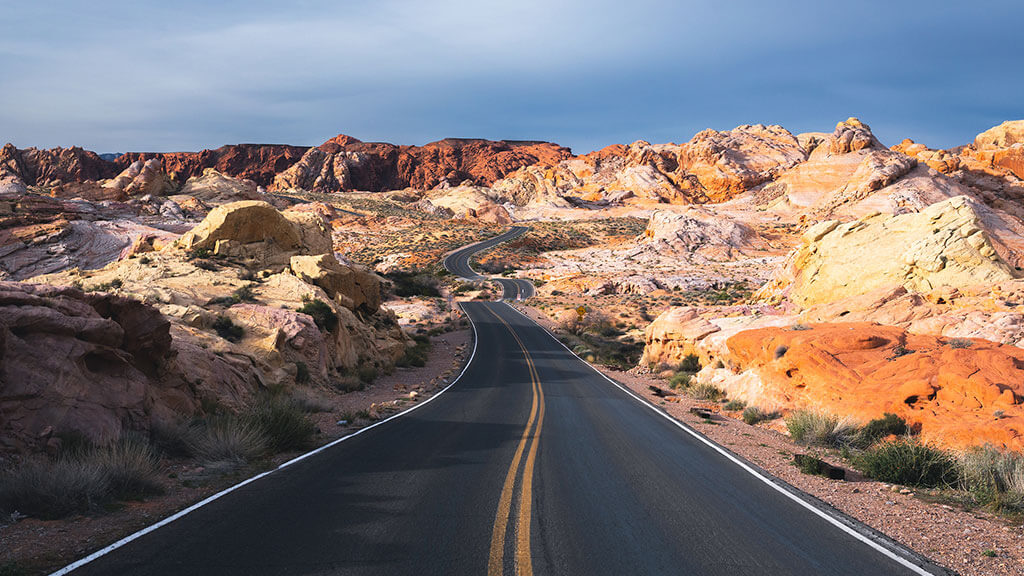
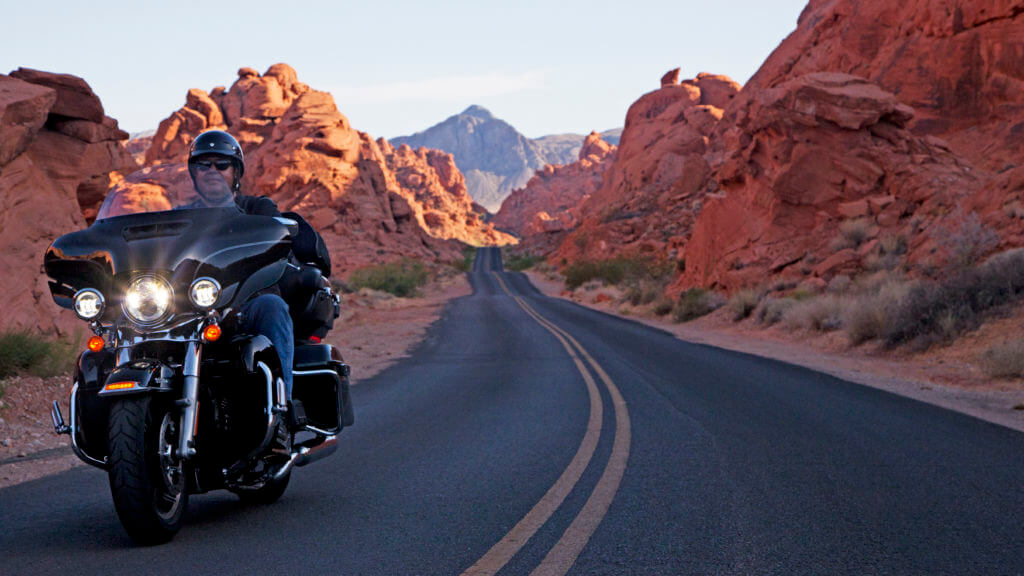
Before Valley of Fire became a designated Nevada State Park, a road was built through the valley as part of the Arrowhead Trail to connect Salt Lake City and Los Angeles. In the 1920s, “Valley of Fire” was named by a AAA official who was traveling the road at sunset and reportedly explained that the entire region looked like it was on fire.
Valley of Fire, Nevada Must-Sees
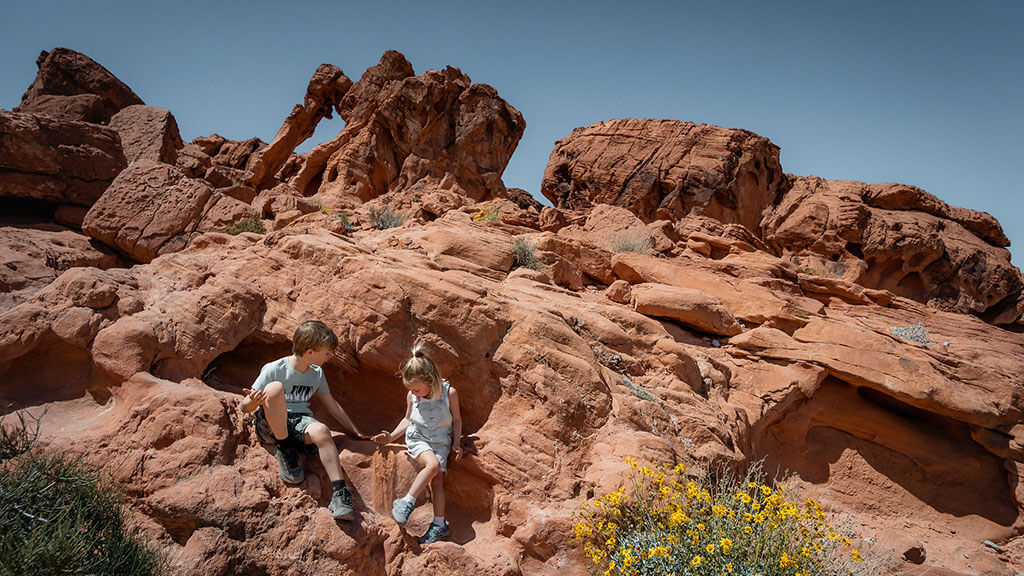
Those hoping to discover more about the valley’s history will find a great visitor center that features comprehensive interpretive displays and exhibits with information on local ecology, geology, and prehistory. Also:
- Don’t miss out on Elephant Rock, located next to the east entrance (It resembles an elephant and is hard to miss!)
- Check out Arch Rock, which can be seen from the Scenic Loop near Atlatl Rock
- Visit the Fire Wave, which is probably one of the most gorgeous spots in the Valley of Fire with white and red zebra stripes that create incredible photo opportunities
Valley of Fire Hikes
Located in the Mojave Desert, Valley of Fire State Park is home to 46,000 acres of red Aztec sandstone, formed by shifting sand dunes 150 million years ago. The stunning landscape glows red for miles into the horizon and is particularly beautiful at sunset. With elevations ranging from 1,500 feet to 3,000 feet, here are some popular Valley of Fire hikes that are easily accessible to visitors who want to explore Valley of Fire from Las Vegas as a day trip, or for those who are camping in the park.
White Domes Hike
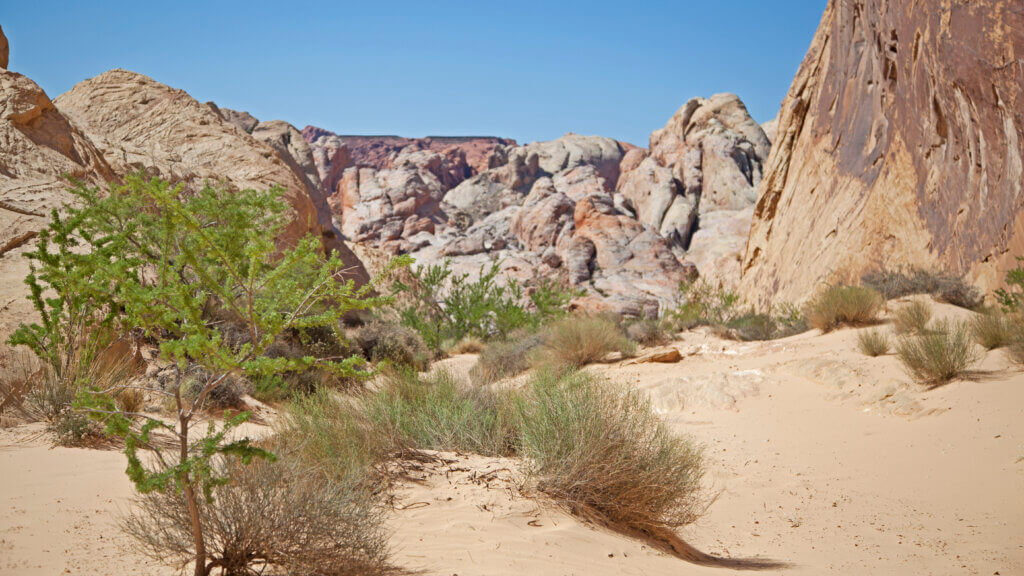
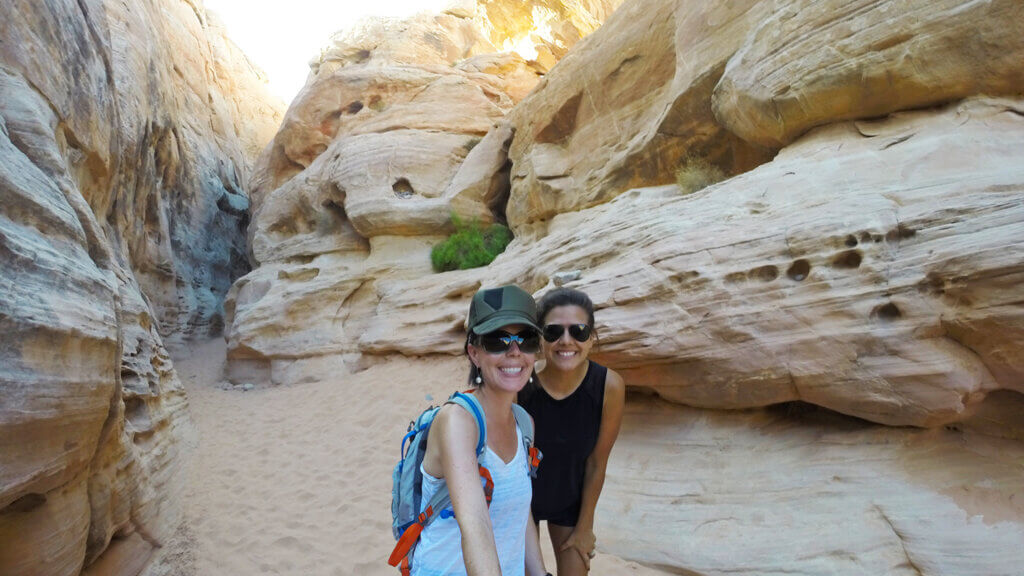
A wander through Valley of Fire State Park’s many fascinating trails will take visitors past incredible formations like White Domes, which are white sandstone rock formations known for their brilliantly contrasting color. Hike the White Domes Trail, which is a loop that shows off the park’s stunning scenery (including desert vistas) and reveals the namesake colors of the rock, a slot canyon, caves, and even a historic movie site where the 1966 film “The Professionals” was shot.
Distance: 1.1 miles round trip
Difficulty: Beginner
See the Valley of Fire’s Petroglyph Hikes
Atlatl Rock Hike
Atlatl Rock is another ultra-accessible site in Valley of Fire with amazing examples of prehistoric petroglyphs. An atlatl is a tool used to launch a spear, and ancient Native Americans of the Pueblo culture carved symbols of the atlatl in the sandstone located at Atlatl Rock.
Distance: 0.1 miles round trip
Difficulty: Beginner
Mouse’s Tank Hike
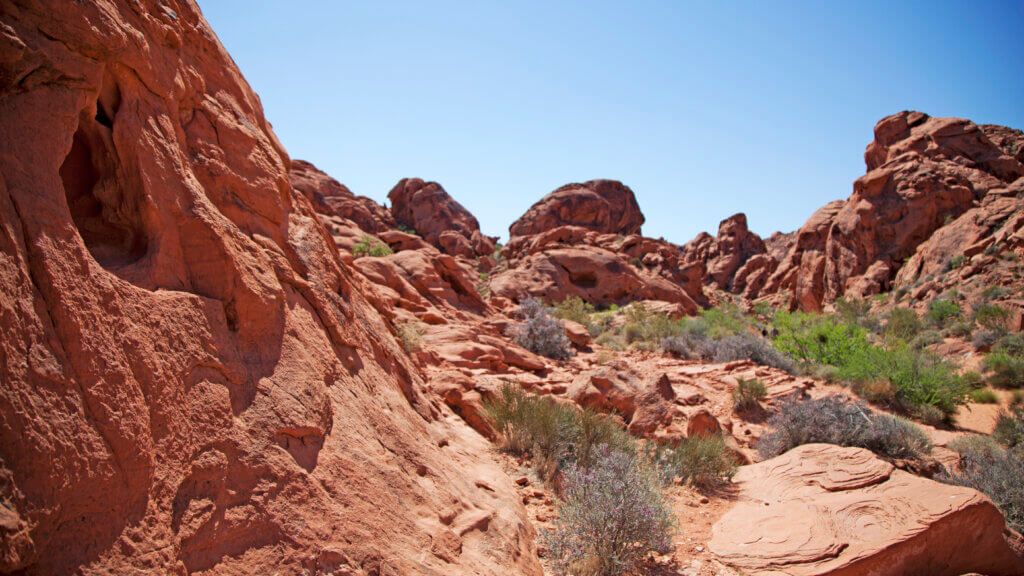
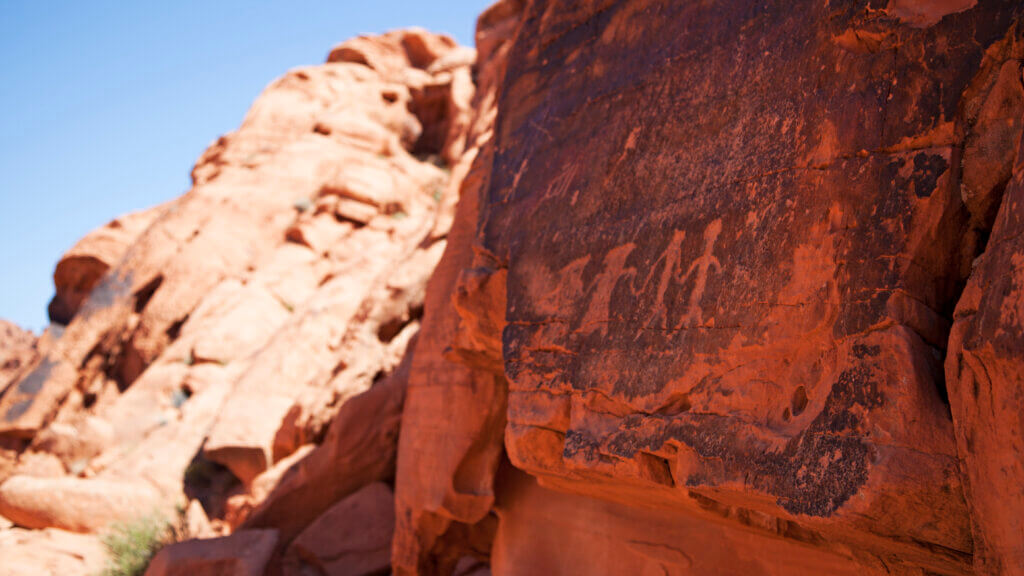
Don’t miss a hike to Mouse’s Tank, which is a natural rock basin in a canyon where rainwater collects. You can hike from the trailhead to Mouse’s Tank and back and see prehistoric petroglyphs along the trail.
Distance: 0.7 miles round trip
Difficulty: Beginner
Download the complete list and map of Valley of Fire trails.
Valley of Fire Camping
Valley of Fire State Park is especially stunning in the early morning and at golden hour. Experience these magic moments for yourself by snagging a first-come, first-served campsite (group campsites can be reserved in advance). Valley of Fire is also Nevada’s most visited state park, so be sure to plan your overnight visit long in advance.
Travel Nevada Pro Tip
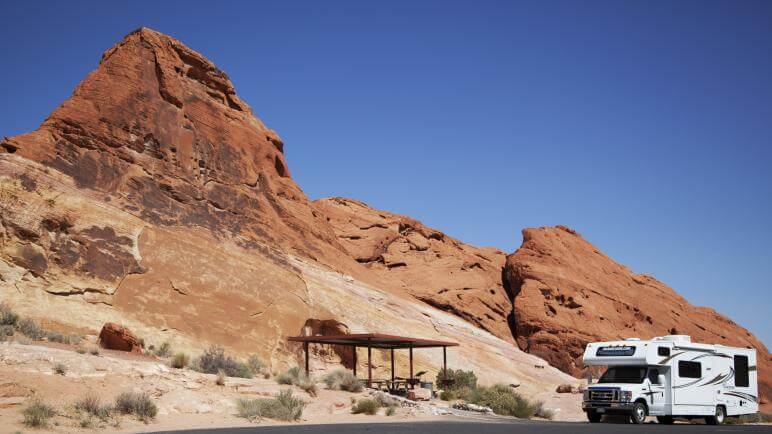
There are also three group camping areas in Valley of Fire State Park that will accommodate up to 45 people, and RV camping is an option, too. Whether you’re coming from across the country, across the world, or just driving up to Valley of Fire from Las Vegas for the day, the park is accessible to everyone.
Shady picnic spots with nearby restrooms can be found at Atlatl Rock, Seven Sisters, White Dome, and the Cabins, which are historic stone structures built with native sandstone in the 1930s by the Civilian Conservation Corps.
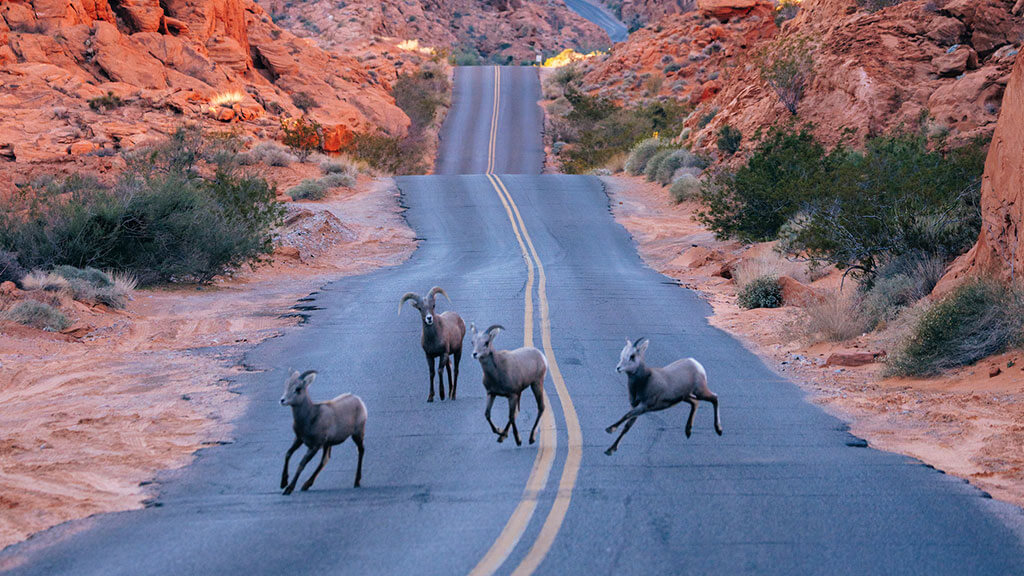
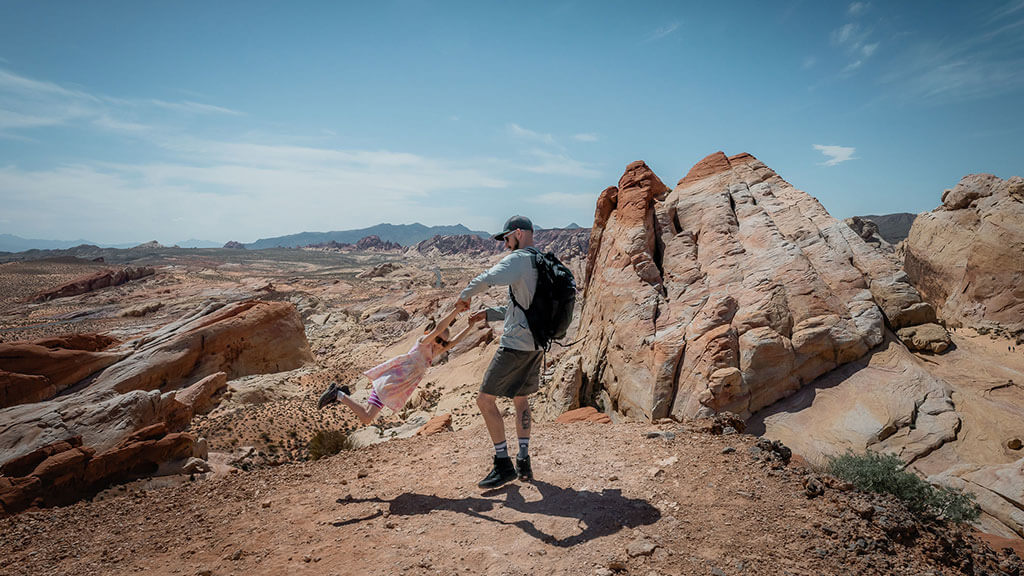
Valley of Fire Weather
While winter temperatures range from freezing to 75 degrees, Valley of Fire State Park weather over the summer often has highs exceeding 100 degrees Fahrenheit (yet it can be cool at night). The landscape offers little shade, so plan your hikes ahead and pack your hat and sunscreen. Annual rainfall averages four inches.
Travel Nevada Pro Tip
Valley of Fire Visitor Center
Visit the Valley of Fire Visitor Center as you take your trip through the park’s beautiful red rocks to collect souvenirs of your adventure and read more about the geology and history of the area. The Valley of Fire Visitor Center has exhibits on the history of the park, the geology of the amazing rock formations, and the wildlife and plant life. The visitor center is open from 9:00 AM to 4:00 PM.
Hours:
Valley of Fire State Park is open seven days a week from sunrise to sunset. While there is 24-hour access to the campgrounds, if you are within park boundaries before sunrise or after sunset and are not an overnight camper, it’s considered trespassing and you can be ticketed.
Admission:
Admission to Valley of Fire State Park is a $15 entrance fee per vehicle ($10 for NV vehicles), per day. Overnight camping is $25 per night ($20 for NV vehicles), with an additional $10 for sites with utility hookups.
This Location:
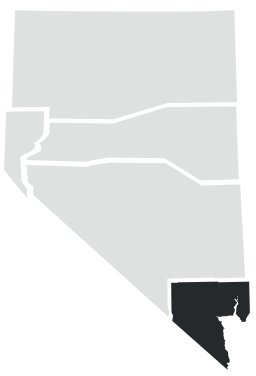
City
Moapa ValleyRegion
Southern Nevada
